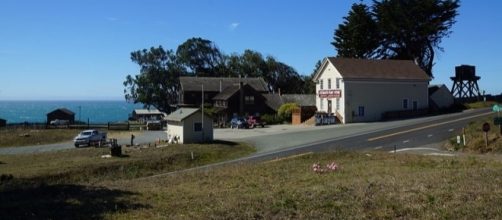An unusual property deal between a California nonprofit and a north coast Indian tribe has secured access rights for a small group that considers the area sacred.
The deal, reached this week between the Save the Redwoods League, the state of California, Sonoma County and the Kashia Band of Pomo Indians, guarantees nearly 900 acres of prime coastal land 110 miles north of San Francisco will remain free of harmful development and available to native people in perpetuity.
“This is a truly unique and special occasion,” Sam Hodder of the Save the Redwoods group, which purchased the property in 2010 and is looking for a buyer, told the San Francisco Chronicle newspaper.
“The Stewarts Point project brings together coast redwood conservation with social justice and new future recreational opportunities for the public."
Easements sold
This week's deal involves the sale of a conservation easement covering the entire Stewarts Point Ranch property to the county and a cultural access easement to the tribe, which feared loss of access to the land if it was sold or subdivided. Total cost of the easements is $6 million, paid by state and county agencies. Kashia members visiting the historic site had apparently been previously forced to leave the property by previous owners.
Kashia tribal official Martina Morgan says her tribe believes the site on the Sonoma County coast marks the spot where humans walked the earth for the first time more than 12,000 years ago.
“Human beings shot down to that area there,” she said. “There the people walked onto the land.”
Redwood trees
The property also includes a stand of endangered 300-year-old redwood trees near the Gualala River, the newspaper said. In fact, it was the trees that first got the nonprofit group interested in the property.
“We’re all looking forward to getting down there, not having to be chased away,” said Reno Keoni Franklin, who chairs the Kashia Tribal Council and has been caught trespassing on the property. “If we’re not feeling well or someone needs a certain prayer, we might go there,” he said.
Traditional activities
The new easements also allow tribe members to practice traditional activities on the land, including abalone diving, collecting mussels and harvesting kelp, the newspaper said.
Morgan said she remembers collecting seaweed on the Northern California coast with her grandmother when she was a child.
"It was really sad to think that one day they were going to close it," she said. “History has a way of changing things, the land and the people. Change doesn’t always start out good but can end good.”
There are said to be around 1,000 Kashia Indians left in California, mostly around Stewarts Point, but they once roamed along the coast from the Gualala River to the Russian River. About 75 tribe members currently occupy a .40-acre reservation near Stewarts Point, the newspaper said.

